Historically Inaccurate Movies People Actually Believe

Some of the most memorable films ever made focus on key historical events. However, relying on these movies for accuracy is seldom a good idea. Most are just theatrical adaptations that push the boundaries of the truth to increase the drama and appeal to more viewers. These on-screen versions of history can leave people with wild misconceptions of what really happened.
Of course, some filmmakers try to stick closer to the truth out of respect for history, but others blatantly deviate from reality without thinking about the consequences. Let’s take a look at some historical movies that are more fiction than fact.
Braveheart
The Mel Gibson film Braveheart is one of the most popular movies of all time. It won five Oscars and dozens of other awards. However, it would never win a prize for historical accuracy. William Wallace, the main character, is depicted as being from a farming family, and that was not the case.
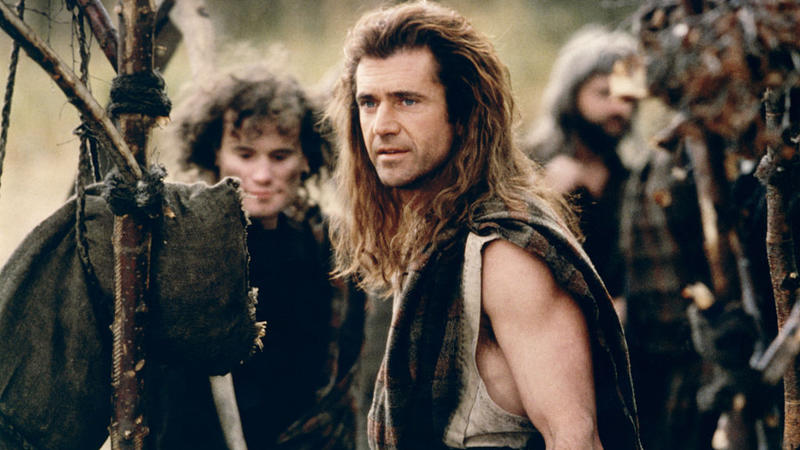
Instead, he was a lesser noble, which is why he received formal training in swordsmanship. His social position and skill meant he was expected to go to war if necessary. He didn’t go because he wanted to avenge the death of his wife. Talk about killing that warm, fuzzy feeling!
The Patriot
In the 2000 film The Patriot, lead actor Mel Gibson portrayed Benjamin Martin. In the movie, Martin, a single father of seven children, fought off invading British soldiers almost single-handedly during the American Revolution. The story is captivating. The problem is Martin wasn’t a real person, and the man the character loosely represents was not so noble.
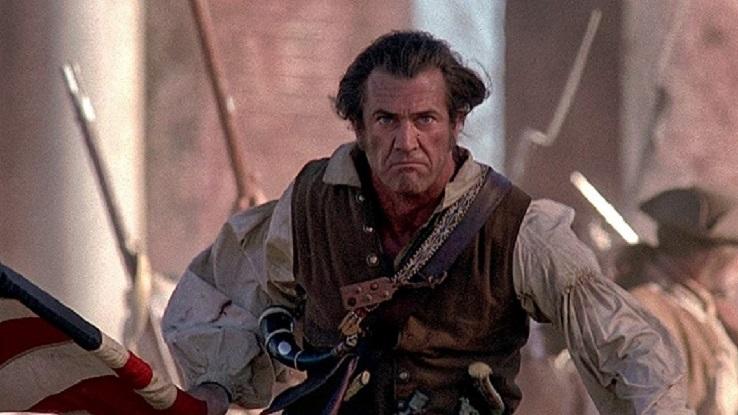
Other inaccuracies include a scene where British soldiers gathered women and children in a church, chained the doors shut and burned them alive. According to historians, there’s no evidence that this event happened.
Gladiator
Gladiator was a huge hit when it premiered in theaters in 2000. However, the movie is more suitable for entertainment than education. While emperor Marcus Aurelius and his son, Commodus, are real historical figures, the main character, Maximus, was not.

Other fallacies include Marcus Aurelius banning the gladiator fights, Commodus’ demise at the hands of a gladiator and the emperor’s desire to see Maximus take over as ruler. Additionally, the film got the Latin language wrong, and some of the fight scenes were misrepresentations of the way they fought in real life.
300
300 is about the Battle of Thermopylae, which was a real event. However, most of the details in the film are made up. In the movie, King Leonidas led 300 Spartans into battle against the massive Persian army. During the real-world fight, more than 7,000 ally troops from neighboring Greek territories joined the Spartans during the conflict.

Although many viewers enjoy watching the epic fighting scenes with scantily clad soldiers, the real soldiers wore full armor. Also, the Persians didn’t have battle rhinos or practice black magic, as the film implies.
Elizabeth: The Golden Age
Elizabeth: The Golden Age portrays the Queen of England as being obsessed about her relationship with Sir Walter Raleigh. In the film, the queen struggled to rule her kingdom due to her infatuation with the charismatic explorer. The creators misrepresented the “Virgin Queen,” however.

Elizabeth was notoriously committed to her kingdom, so it’s highly unlikely she ever allowed Raleigh to consume all her attention, even if he did throw his most expensive cloak over a puddle for her (which has never been proven to be true). Additionally, she was shown wearing wildly extravagant outfits, which were more outlandish than her gowns in reality.
10,000 B.C.
The 2008 film 10,000 B.C. is a love story based in the prehistoric time period. It brought in millions at the box office, but that wasn’t due to historical accuracy. Much of this flick is entirely far-fetched and pure fiction.

First, it’s debatable whether saber-tooth tigers and woolly mammoths were even alive at this time in history. Additionally, pyramids and written language weren’t known to exist until much later in civilization. Even the tools shown in the film weren’t around during the time the story takes place.
J. Edgar
J. Edgar, a film directed by Clint Eastwood, is arguably accurate by some accounts. However, there are some doubts as to the former head of the FBI’s sexual orientation. Eastwood portrayed him as having a long-term affair with his number two man, Clyde Tolson.

Hoover was also credited with revolutionizing wiretapping techniques, but that isn’t entirely true. He used them frequently, but he didn’t invent the practice. He also wasn’t solely responsible for capturing the kidnapper of Charles Lindbergh’s son, although viewers are led to believe that was the case.
Pocahontas
Pocahontas is a well-known Disney classic that was meant to teach kids about historical events while entertaining. However, the story portrayed is very different from reality. Pocahontas and Captain John Smith were not romantically involved. In fact, there was a significant age difference between the two that Disney doesn’t show.
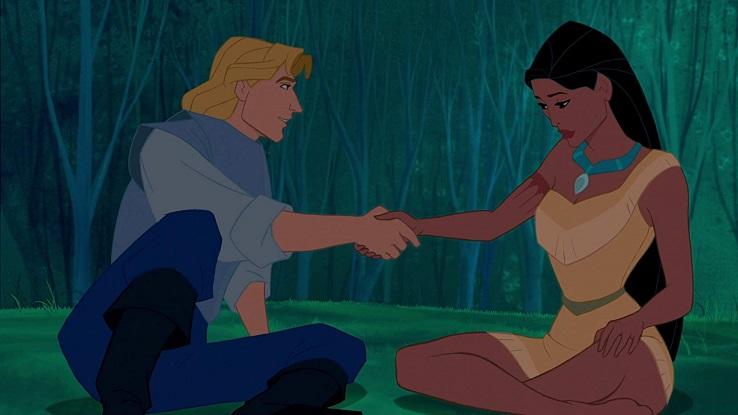
Smith was around 27 years old when he met Pocahontas, but she was only 10 or 11 years old. Also, the scene where Pocahontas saved Smith from Chief Powhatan never happened, as she was only a child.
Marie Antoinette
Sofia Coppola took liberties with her film Marie Antoinette when it came to historical events, as most directors in Hollywood do. Her representation of Antoinette wasn’t solely meant to depict reality. It was also meant to appeal to the target audience.

The costumes were very vibrant and eye-catching with brightly colored fabrics that didn’t exist at the time. Furthermore, her relationship with Louis-Auguste took much longer to develop than the movie shows. However, given Coppola’s goal, the film was successful at drawing young viewers’ attention to a historical figure they didn’t previously care about.
Shakespeare in Love
Shakespeare In Love was never meant to be an accurate depiction of real events. However, that doesn’t diminish the fact that many viewers didn’t realize that and were misled. For example, the Queen of England attends a Shakespeare play during an outbreak of the bubonic plague.
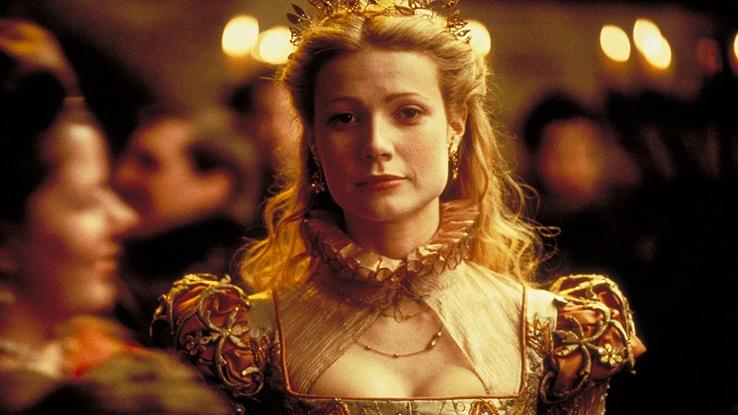
Not only would the queen not have attended a play during a plague outbreak — she would have remained barricaded behind the castle’s walls — but she wouldn’t have even gone to a theater. She would have demanded the theater come to her. Historically, royals often arranged for theatrical productions to be performed for their court.
JFK
Oliver Stone’s JFK film, which premiered in 1991, brought together conspiracy theories to focus on the story that most people believe to be true. The main thing wrong with the filmmaker’s portrayal was that the documentary-like movie appears to be factual. Several of the liberties Stone took include David Ferrie’s confession of involvement and the freely given testimony of Perry Russo.

Ferrie never confessed, and Russo was drugged before he testified. The film also led the audience to believe that Vice President Lyndon B. Johnson possibly assassinated Kennedy to take over the presidency. It’s a popular theory, but one that has never been proven to be true.
Pearl Harbor
Pearl Harbor, produced by Michael Bay and Jerry Bruckheimer in 2001, netted more than $449 million at the box office. The movie was entertaining, but it also left a lot of people believing the story of the two fighter pilots was true. In reality, they didn’t exist, although the bombing of Pearl Harbor by Japan was obviously a real event.

Beyond the core details, most of the film is made up for entertainment. One historically incorrect detail occurs in the scene when President Roosevelt stands up to make a speech. The president used a wheelchair and was sitting when he addressed the nation.
A Beautiful Mind
A Beautiful Mind is a film about Nobel Prize winner John Nash. In the movie, Nash was diagnosed with schizophrenia and suffered from hallucinations that caused problems in his personal life. It also showed the mathematician being invited by the Pentagon to do cryptography work.
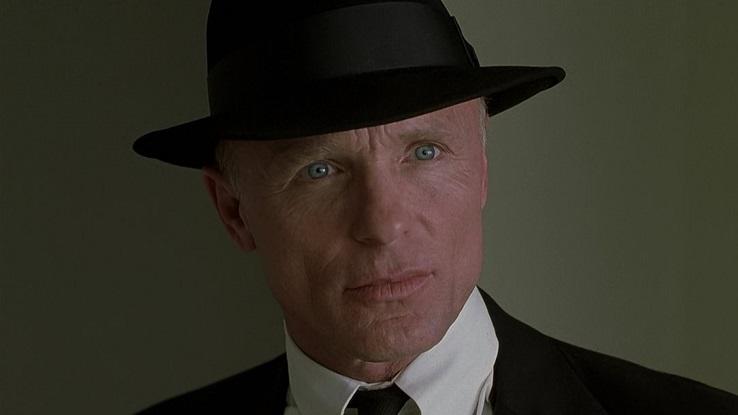
However, there are some things about the brilliant man that were left out. Nash had affairs with men, which led to the downfall of his marriage. In the movie, Nash dedicated his Nobel Prize to his wife, but that didn’t happen. He didn’t even give an acceptance speech for the award.
Amistad
Amistad is a Stephen Spielberg movie that tells the story of a slave ship in 1839. Many people claim the movie doesn’t offer a fair depiction of the slaves’ true experiences.

It’s arguably a toned-down version of the real events that took place, which some people believe is unfair and inappropriate. People who didn’t like the film say Spielberg did little to show who the main character, Sengbe Pieh, really was. They also argue that John Quincy Adams was not as compassionate to the slaves as he was in the movie.
Argo
Argo, released in 2013, stars Ben Affleck as a CIA agent who masqueraded as a producer in Tehran so he could save six hostages in 1980. There are several details in the movie about the mission that are completely false, however.

For example, the Hollywood version of the story gave all the credit for the plan to the United States. In reality, New Zealand and Canada were also significantly involved. Additionally, the real event didn’t include an interrogation by Iranians after a chase along an airport runway. The CIA story was never even questioned, but the truth wouldn’t have been as dramatic.
Newsies
Newsies writers actually did a pretty good job portraying the newspaper strike orchestrated by nearly 5,000 kids who sold newspapers in the late 1800s. The Disney film used some variations of the real kids’ names, but many of them went by nicknames anyway.

Some of the characters are actually a combination of several people involved in the strike against the newspaper’s owners. Where the movie deviated from reality was the singing and dancing the characters did in the street. It was a fun movie moment, but that’s obviously not what these kids really did.
Cool Runnings
Sadly, much of the beloved movie Cool Runnings is fictional, including the existence of several of the main characters. In the on-screen story, the Jamaican bobsledders were sprinters who didn’t qualify for the Summer Olympics. Instead, they decided to try their luck at bobsledding and hired a coach named Irving Blitzer.

“Irv,” played by John Candy, wasn’t a real person. In reality, the team had two coaches, William Maloney and George Fitch. The coaches recruited the sprinters from the Jamaican Army — they did not choose to join the team. They simply listened to orders from their superiors.
The Greatest Showman
The Greatest Showman is an entertaining production, but it doesn’t do a good job of depicting the life of PT Barnum, however. The circus owner was portrayed as a kind man who put together a group of misfits and led them on a journey to find their self-worth.

That is far from the truth. Barnum exploited the members of his circus, which was a sideshow, for the most part. He made members perform and tour even when they were sick. He even sold tickets to a live autopsy of one of his crew members after she died to make money off the event.
Captain Phillips
Captain Phillips featured Tom Hanks playing the title character in the 2013 film. The man himself is far from the man he appeared to be on screen. The Hollywood version showed him giving up to save the rest of his crew when Somali pirates captured their ship, the MV Maersk Alabama.

The real members of the crew actually blame Captain Phillips for their capture, and they have filed a lawsuit for damages in connection with the hijacking. They claim Phillips did not think of the crew when he failed to listen to warnings or follow safety procedures that would have kept them out of harm’s way.
The Blind Side
The Blind Side tells the story of American football player Michael Oher, starting shortly before his adoption by Leigh Anne Tuohy (Sandra Bullock) and her family. However, it doesn’t tell the story exactly the way it occurred. In the film, Tuohy immediately offered Oher a place to live.
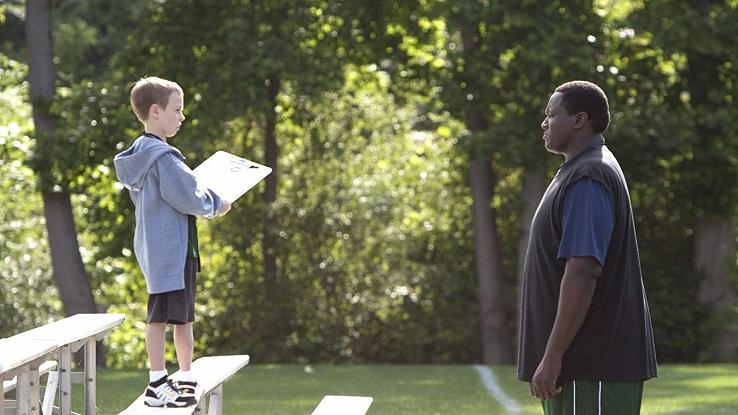
While the Tuohy family did eventually invite Oher to come to live with them, it was months before they made that offer. Additionally, the movie portrayed Oher as being extremely behind academically and a novice at football. Neither of those details were true.
Titanic
Titanic features a wonderful love story — next to impossible in the four days the ship stayed afloat — and the movie has some major historical flaws. The main characters, Jack and Rose, were from two different social classes, but they fell in love before the ship hit a massive iceberg and sank into the ocean.

Due to the separation of the two classes, it would have been challenging for them to even meet. The producers also ultimately apologized to the family of William McMaster Murdoch after they expressed their outrage at the portrayal of their late relative as a murderer who killed several passengers before shooting himself — that never happened.
Alexander
The Oliver Stone film Alexander boasts an all-star cast, including Val Kilmer, Angelina Jolie, Colin Farrell, Anthony Hopkins and Rosario Dawson. Like many historical stories played out on the big screen, this one was sensationalized for entertainment and ticket sales.

The fight scenes are far-fetched. For example, the last battle in the movie takes place in a forest, which isn’t a setting where Alexander would have engaged his opponent because of tactical disadvantages. For the most part, the film does a good job of portraying the times at least.
Schindler’s List
Schindler’s List is a movie that shows some of the very horrible atrocities suffered by Jewish people during the Holocaust. For the most part, Steven Spielberg does a good job depicting a very difficult topic in a way that allows viewers to truly feel what the people of that time endured at the hands of the Nazis.

However, there are some deviations from historical events and even from the book. One of the major differences is that in the movie Schindler said he started hiring Jewish workers before Polish workers because they were cheaper. That wasn’t true.
Bonnie and Clyde
It’s not surprising that the 2013 film Bonnie and Clyde romanticizes one of the most notorious crime couples of all time. After all, these two have always been made out to be larger than life. Maybe the fascination stems from the fact that few couples are involved in crime the way these two were.

Regardless, the film grossly exaggerates the characters. In the movie, Bonnie shared photos of herself and Clyde with a journalist, an event that never took place. Additionally, it has never been confirmed that Bonnie was the mastermind behind their crime sprees.
Patch Adams
Patch Adams, portrayed by the late Robin Williams in 1998, was a doctor on a mission to create a free hospital for people who suffered from various illnesses. Patch had traveled the world for much of his adult life, attending to sick and dying patients of all ages.

The movie told his story beautifully. However, it ended with a message that led audiences to believe there was a wonderful facility under construction where people would receive free treatment. That was not the case, and the hospital is still not open.
The Untouchables
In 1987, The Untouchables made a big impression on the silver screen. However, the audience may falsely remember that Agent Eliot Ness ultimately took down one of the most infamous gangsters in history. That wasn’t a completely accurate portrayal of actual events.

In the film, Eliot Ness led a team of four agents who took down the infamous Al Capone. Of the four, Ness was the only real-life character. The on-screen version depicted him as nearly single-handedly framing and taking down Capone. However, Ness actually led a team of 10 agents who were all involved in the kingpin’s capture.
Amadeus
Amadeus, released in 1984, described a fierce rivalry between composers Antonio Salieri and Amadeus Mozart. In the screenplay, Salieri’s jealousy over the talent of the younger Mozart led him to kill. Historically speaking, the film has numerous flaws.
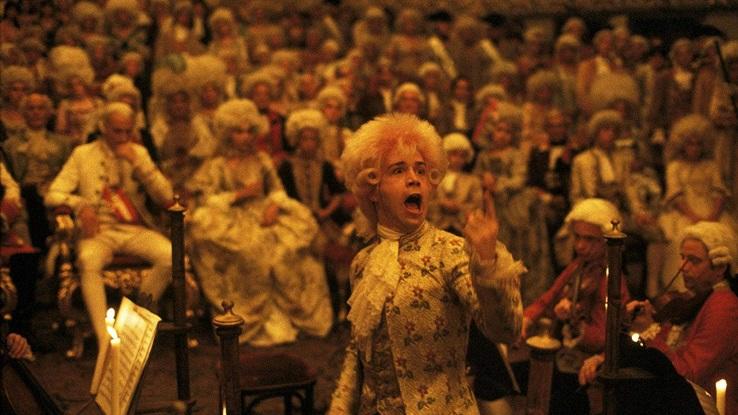
The biggest one is that Salieri murdered Mozart — or that Amadeus was murdered at all. At one time, many historians believed the talented young entertainer was poisoned. However, some now believe he died of a strep infection. Despite which version of history you believe, there is no conclusive evidence Salieri was involved in his death.
U-571
U-571 depicted American soldiers taking down a German submarine in an attempt to obtain an Enigma machine and break the German’s secret code during World War II. The actual event didn’t involve any Americans. It was British soldiers who acquired the famous Nazi coding machine.

Furthermore, the soldiers didn’t attack the German submarine called U-110. It struck them, but after the attack, the British soldiers boarded the ship and retrieved the machine and documents that helped the Allied forces crack the code. The entire movie was pretty much made up and served as an insult to the real British troops.
The Last Samurai
The Last Samurai features the award-winning actor Tom Cruise. What it doesn’t feature is historical accuracy. In the film, Cruise travels to Japan to teach the last of the Samurai to fight with guns. In real life, it wasn’t an American who took on that role.

The Japanese enlisted the help of the Europeans to modernize their armies, and the film loosely depicts a time when the country was moving forward in terms of modernization. Unfortunately, it does a really lousy job of accurately showing how this was achieved.
Apocalypto
Mel Gibson’s Apocalypto includes real Mayan language, but it doesn’t correctly depict the Mayan people. Gibson portrayed this historically peaceful civilization as a bunch of ruthless killers who believed the only way to further the existence of their people was through sacrificing humans to the gods.

The storyline followed this theme by showing the capture and subsequent escape of the main character. Another misleading event was the demise of the Mayans upon the arrival of Spaniards in Mexico, an event that didn’t take place until hundreds of years after the collapse of the Mayans.





